-
01-01-2015
Factors associated with immunization against Hepatitis B among workers of the Family Health Strategy Program
Revista Brasileira de Enfermagem. 2015;68(1):84-92
Abstract
Factors associated with immunization against Hepatitis B among workers of the Family Health Strategy Program
Revista Brasileira de Enfermagem. 2015;68(1):84-92
DOI 10.1590/0034-7167.2015680112p
Views0See moreObjective:
to investigate the report of vaccination against Hepatitis B, verification of immunization and the factors associated with dosages of anti-HBs.
Method:
we collected blood samples from those reported that they had one or more doses of the vaccine. We evaluated the association of the dosage of anti- HBs with sociodemographic conditions, occupational and behavioral. The associations were verified by Mann Whitney and Kruskal Wallis and correlation Spermann by linear regression using SPSS® 17.0.
Results:
among the 761 respondents, 504 (66.1%) were vaccinated, 52.5 % received three doses, 30.4 % verified immunization. Of the 397 evaluated for the determination of anti-Hbs, 16.4% were immune.
Conclusion:
it was found that longer duration of work was associated with higher levels of anti-HBs, while levels of smoking were inversely associated with anti-HBs. These workers need for vaccination campaigns.
-
01-01-2015
The decreasing number of cigarettes during psychiatric hospitalization: intervention or punishment?
Revista Brasileira de Enfermagem. 2015;68(1):76-83
Abstract
The decreasing number of cigarettes during psychiatric hospitalization: intervention or punishment?
Revista Brasileira de Enfermagem. 2015;68(1):76-83
DOI 10.1590/0034-7167.2015680111p
Views0See moreObjective:
To identify the mental disorders carriers’ perception, the smokers ones, about the decreasing number of cigarettes during psychiatric hospitalization.
Method:
Exploratory study with 96 hospitalized carriers of mental disorders who are smokers: G1 (34 subjects hospitalized when was allowed one cigarette by hour) and G2 (62 subjects hospitalized when it was reduced to eight cigarette by day). Semi-structured questionnaire. Thematic content analysis.
Results:
The G1 admitted satisfaction with the restriction – smoking during hospitalization as entitlement. The G2 resists the restriction change occurred without dialogue or support. In spite of the difficulties, some attitude changes about the cigarette were noticed such as increase of the responsibility, discovery of the ability to reduce smoking and the meaning of its role.
Conclusion:
Some subjects understand the smoking health policy change as punishment, while others as opportunity to think about the role of cigarette in their life.
-
01-01-2015
Family functionality in oldest old household residents
Revista Brasileira de Enfermagem. 2015;68(1):68-75
Abstract
Family functionality in oldest old household residents
Revista Brasileira de Enfermagem. 2015;68(1):68-75
DOI 10.1590/0034-7167.2015680110p
Views0See moreObjective:
the aim of this study was to identify factors associated with family functionality of non-institutionalized long-lived subjects, who were residents in Goiânia (GO), Brazil.
Method:
this was a population-based epidemiological study with cross-sectional outline. Evaluation scales of the functional and cognitive capacities were used. Family dynamics was measured using the Adaptation, Partnership, Growth, Affection, and Resolve (APGAR) instrument by making home interviews with 131 long-lived individuals.
Results:
there was prevalence of the female gender, average of age of 83.87 years old, widowhood condition, and residence in a big family, primary schooling, and self-perception of regular health. A great amount showed independence for self-care and partial dependence for daily life instrumental activities. Family functionality prevailed with score average of 9.06 points.
Conclusion:
in conclusion, family functionality in long-lived subjects is associated with self-perception of poor/bad health, osteoporosis, and fall. Results allowed characterizing long-lived subjects’ family functionality with the aim of valuing and prioritizing family as a caregiver.

-
01-01-2015
Prevalence of non-adherence to antihypertensive pharmacotherapy and associated factors
Revista Brasileira de Enfermagem. 2015;68(1):60-67
Abstract
Prevalence of non-adherence to antihypertensive pharmacotherapy and associated factors
Revista Brasileira de Enfermagem. 2015;68(1):60-67
DOI 10.1590/0034-7167.2015680109i
Views0See moreObjective:
the aim of the study was to determine the prevalence of non-adherence to antihypertensive drug treatment and its association with factors bio-socio-economic and welfare.
Method:
it was a descriptive, cross-sectional study, performed with 422 hypertensive individuals. Data were collected through home interviews, conducted between December 2011 and March 2012.
Results:
the results showed that the respondents were mostly female, married, elderly, low income and little time of diagnosis. Were considered non adherent to medication 42.65% of participants. Non-Caucasian hypertensive patients, with fewer than eight years of schooling, who did not regularly attend doctor’s appointments, took more than two anti-hypertensive medications and did not have private health insurance, showed higher likelihood of not complying with the drug treatment.
Conclusion:
these findings suggest that hypertensive patients with unfavorable socioeconomic characteristics and difficulty of access to the service require different interventions in order to encourage them to adhere to medication treatment.
-
01-01-2015
Adherence and knowledge about the use of personal protective equipment among manicurists
Revista Brasileira de Enfermagem. 2015;68(1):52-59
Abstract
Adherence and knowledge about the use of personal protective equipment among manicurists
Revista Brasileira de Enfermagem. 2015;68(1):52-59
DOI 10.1590/0034-7167.2015680108i
Views0See moreObjective:
this study aimed to assess adherence and knowledge of manicures/pedicures on the use of Personal Protective Equipment (PPE).
Methods:
it was a survey with 235 manicures/pedicures in salons, Belo Horizonte/Brazil. Data were analyzed with the software Statistical package for the social sciences (17.0), using descriptive statistics, chi-square and logistic regression.
Results:
the adherence and the knowledge of the professional were evaluated using the median of the results, obtaining 52% and 63% respectively. The professionals younger than 31 were more likely (2.54 times) to adhere to PPE and those who claimed to have done biosafety course and to use uniform during work, had better chance of understanding (2.86 and 3.12 times, respectively). The majority (83.4 %) stated that the use of PPE should occur for all procedures, meanwhile 71.5 % cited not use them.
Conclusions:
the results indicate the poor adherence to PPE, strengthen occupational biological risk and need for training of these professionals.
-
01-01-2015
Predictive value of the Manchester Triage System: evaluation of patients’ clinical outcomes
Revista Brasileira de Enfermagem. 2015;68(1):45-51
Abstract
Predictive value of the Manchester Triage System: evaluation of patients’ clinical outcomes
Revista Brasileira de Enfermagem. 2015;68(1):45-51
DOI 10.1590/0034-7167.2015680107i
Views0See moreObjective:
to analyze the predictive value of the Manchester Triage System in relation to clinical outcome of patients.
Methods:
prospective observational study of 577 patients admitted to the ER and subjected to risk classification. The Therapeutic Intervention Scoring System-28 (TISS-28) was used to measure the severity of patients (primary outcome) and secondary outcomes: high / transfer, death, and length of hospital stay. Descriptive and univariate analyzes were conducted.
Results:
patients classified as red are 10.7 times more likely to have scores above 14 in TISS-28 in relation to others. Patients classified as red have 5.9 times more chance of progression to death compared to others. Patients of high priority service are 1.5 times more likely to be hospitalized over five days than low priority.
Conclusions:
STM proved a good predictor of clinical outcomes.
-
01-01-2015
Entrepreneurship in Nursing: overview of companies in the State of São Paulo
Revista Brasileira de Enfermagem. 2015;68(1):40-44
Abstract
Entrepreneurship in Nursing: overview of companies in the State of São Paulo
Revista Brasileira de Enfermagem. 2015;68(1):40-44
DOI 10.1590/0034-7167.2015680106i
Views0See moreObjective:
the present study aimed to identify and characterize nursing companies managed by entrepreneur nurses registered at the Commercial Registry of São Paulo by 2011.
Method:
it’s a descriptive, exploratory study, whose data collection, made throughout January 2012, was carried out on the Commercial Registry of Sao Paulo website. This non-governmental body has the function of registering the opening of companies and supervising their trade situation.
Results and conclusion:
this study allowed us to identify that the entrepreneur nurse is a growing reality through the identification of 196 companies opened by these professionals. Afterwards, it was analyzed their time of functioning, the main economic activity of the company, capital value, percentage of nurse partners and the distribution of companies by region of Sao Paulo State.
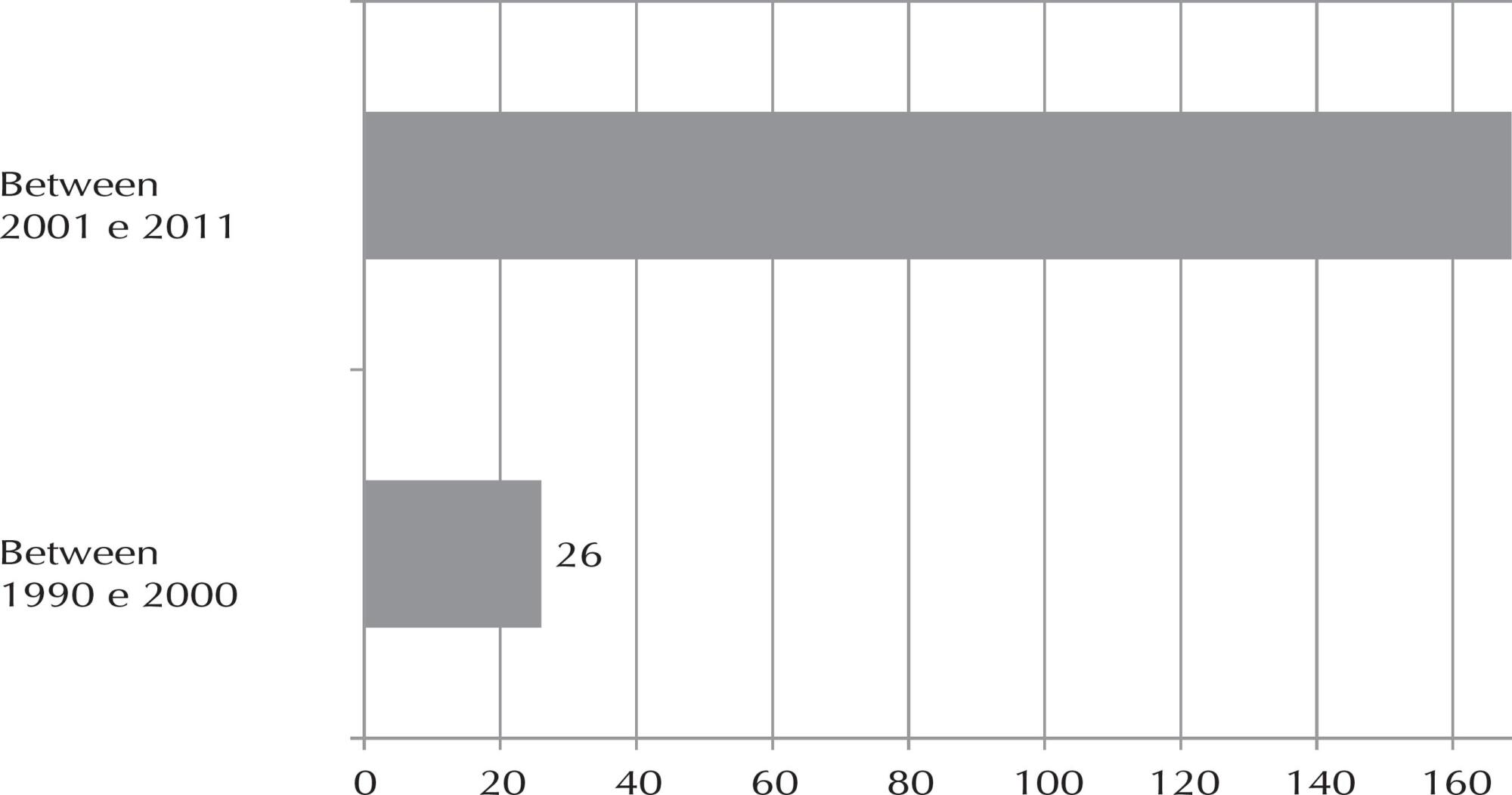
-
01-01-2015
Knowing blood donation surroundings: Implications for nurse service in hemotherapy
Revista Brasileira de Enfermagem. 2015;68(1):32-39
Abstract
Knowing blood donation surroundings: Implications for nurse service in hemotherapy
Revista Brasileira de Enfermagem. 2015;68(1):32-39
DOI 10.1590/0034-7167.2015680105i
Views0See moreObjective:
the study aims at discussing the significations apprehended by the non-blood donators, considering the context and the consequences of the acting of the nurse in hemotherapy.
Method:
it is a qualitative approach, with theoretical frame of Symbolic Interactionism and Grounded Theory method. The data production was carried out by intensive interview with subjects of three sample groups of a University Hospital of Rio de Janeiro City.
Results:
the phenomenon originated two analysis categories: “Perceiving the blood matter” and “Reflecting about the blood donation campaigns”. It was observed that the environment of the donor is not composed by contact with the other and the information that it can achieve, including the media.
Conclusion:
these were the main basis for the knowledge of blood donation according to their beliefs, culture and values. Therefore, all these aspects must be considered by the nurse acting on donors capture.
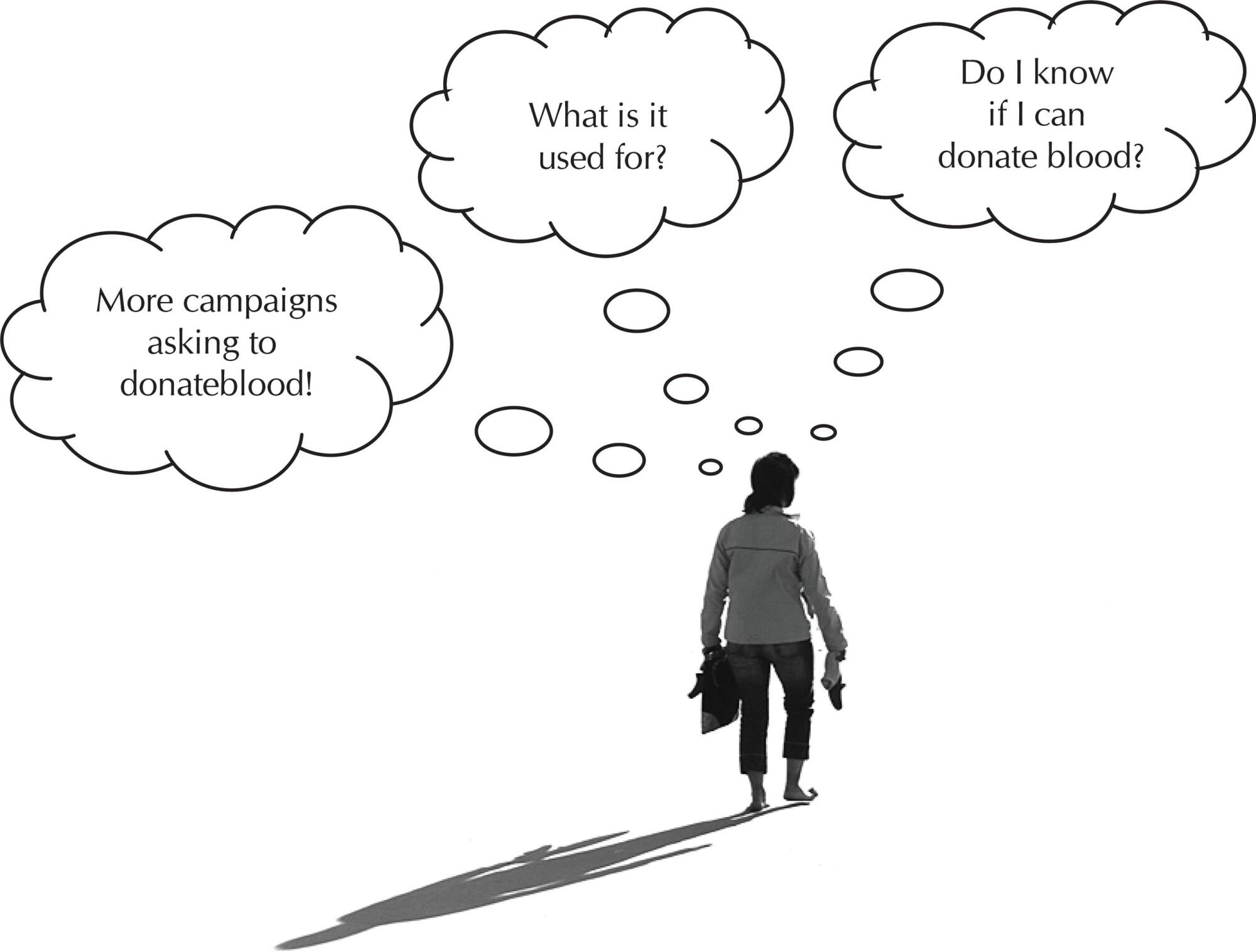
-
ORIGINAL ARTICLE09-06-2024
Reflective practice of nurse residents in the teaching-learning process in teaching hospitals
Revista Brasileira de Enfermagem. 2024;77(4):e20230540
Abstract
ORIGINAL ARTICLEReflective practice of nurse residents in the teaching-learning process in teaching hospitals
Revista Brasileira de Enfermagem. 2024;77(4):e20230540
DOI 10.1590/0034-7167-2023-0540
Views0See moreABSTRACT
Objective:
To analyze reflective practice in the teaching-learning process of nurses in residency programs in teaching hospitals in Minas Gerais, Brazil.
Methods:
Case study, based on the reflective practice framework, conducted in two teaching hospitals. Observation and interviews were conducted with first and second-year residents, and five participants were included for in-depth analysis, with their data subjected to frequency distribution analysis and Critical Discourse Analysis.
Results:
In 519 observed activities, elements of reflection were identified in 22.2%, especially active listening and expression of doubts. Discourses indicated practice as the best moment for teaching-learning due to its potential to generate reflections. Learning by doing and case discussion were considered potential strategies for reflective learning.
Conclusion:
Know-in-action reflection was evidenced as the predominant formative aspect for residents, with few opportunities for reflection on reflection-in-action.
-
ORIGINAL ARTICLE11-22-2024
Sociodemographic and occupational influences on health professionals’ quality of life
Revista Brasileira de Enfermagem. 2024;77(4):e20240010
Abstract
ORIGINAL ARTICLESociodemographic and occupational influences on health professionals’ quality of life
Revista Brasileira de Enfermagem. 2024;77(4):e20240010
DOI 10.1590/0034-7167-2024-0010
Views0See moreABSTRACT
Objective:
To analyze the sociodemographic and occupational influences on health professionals’ quality of life.
Method:
This descriptive-exploratory, cross-sectional, analytical, and quantitative study addressed 94 health workers, including nursing technicians, nurses, and physical therapists working in Intensive Care Units in a town in the extreme south of Brazil in 2023. The student’s t-test and Spearman correlation were used.
Results:
A significant positive correlation was found between being a woman and the psychological domain and between income and the social and environmental domain while working hours were inversely related to general QoL. Additionally, workload negatively impacted the physical, psychological, and general QOL, furniture negatively influenced the psychological domain, and equipment was negatively associated with the physical and psychological domain.
Conclusion:
The characteristics of the work environment interfere with several areas of quality of life.
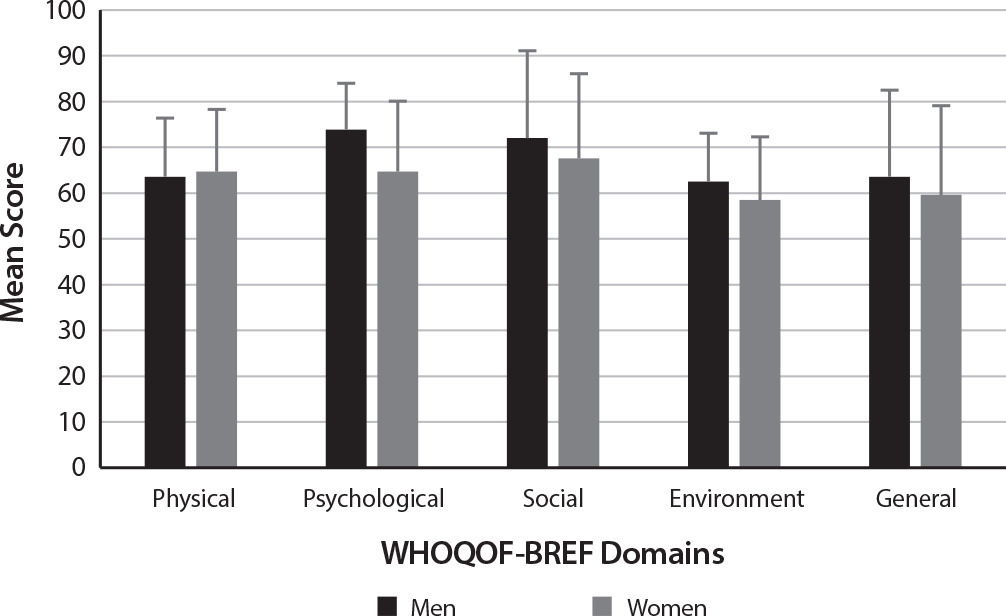
-
REVIEW09-06-2024
Parents’ or legal guardians’ beliefs and attitudes about childhood vaccination: a scoping review
Revista Brasileira de Enfermagem. 2024;77(4):e20240126
Abstract
REVIEWParents’ or legal guardians’ beliefs and attitudes about childhood vaccination: a scoping review
Revista Brasileira de Enfermagem. 2024;77(4):e20240126
DOI 10.1590/0034-7167-2024-0126
Views0See moreABSTRACT
Objective:
to map scientific evidence about perceptions, beliefs, knowledge and attitudes of parents or legal guardians of children under 5 years of age regarding routine childhood vaccination.
Methods:
a scoping review, conducted in accordance with the JBI framework. The searches were carried out in the PubMed/MEDLINE, Web of Science, Scopus and LILACS databases. A total of 5,535 studies were returned and 77 were selected, which met the inclusion criteria.
Results:
perceptions related to interaction with healthcare professionals and services, with family organization and structure, with social interaction and public policies, cultural, religious and personal beliefs, knowledge about vaccination schedule, vaccination and immunization process and sources of information are the main factors mapped and which can positively or negatively influence parents’ or legal guardians’ attitudes towards vaccinating children.
Conclusions:
the findings allow us to identify factors related to parents’ perception and beliefs about childhood vaccination.
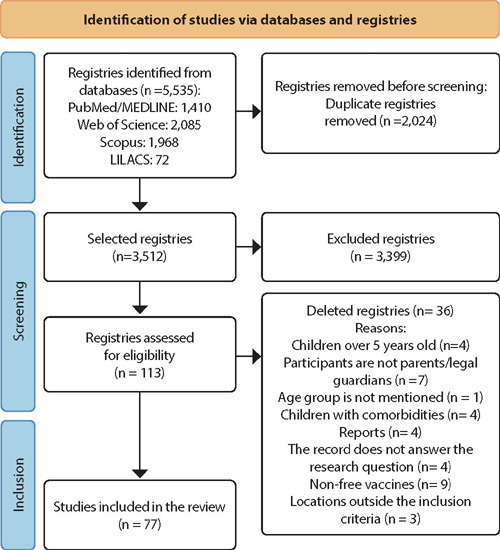
-
ORIGINAL ARTICLE09-20-2024
Predictor variables effect on the development of Burnout Syndrome in higher education professor
Revista Brasileira de Enfermagem. 2024;77(4):e20240132
Abstract
ORIGINAL ARTICLEPredictor variables effect on the development of Burnout Syndrome in higher education professor
Revista Brasileira de Enfermagem. 2024;77(4):e20240132
DOI 10.1590/0034-7167-2024-0132
Views0See moreABSTRACT
Objectives:
to correlate the development of Burnout Syndrome in higher education professors with the following variables: sociodemographic, economic, work, sleep pattern, level of anxiety and quality of life.
Methods:
observational, analytical, cross-sectional study with a quantitative approach. Data collection took place from August to November 2022, with 140 professors from a private higher education institution in the Western Brazilian Amazon.
Results:
professors who carried out activities outside institutional hours and who had sleep duration < 5 hours, presented lower scores in the personal fulfillment dimension of burnout, with (p=0.002) and (p=0.001), respectively. The higher the scores for the physical (p=0.001), psychological (p=0.000) and social relationships (p=0.002) domains of quality of life, the lower the personal fulfillment scores for the syndrome.
Conclusions:
through linear regression, it was evidenced that several variables explain the development of burnout. Institutional and governmental actions can minimize the negative influence of these variables.
-
ORIGINAL ARTICLE11-22-2024
Transitions experienced by people living with limitations resulting from leprosy: a research-care study
Revista Brasileira de Enfermagem. 2024;77(5):e20230229
Abstract
ORIGINAL ARTICLETransitions experienced by people living with limitations resulting from leprosy: a research-care study
Revista Brasileira de Enfermagem. 2024;77(5):e20230229
DOI 10.1590/0034-7167-2023-0229
Views0See moreABSTRACT
Objective:
to understand the transitional processes that affect the adaptation of people who live with limitations resulting from leprosy.
Methods:
This is a qualitative study based on the precepts of Transition Theory, mediated by care-research, with 24 people with limitations resulting from leprosy in an ex-hospital colony in Piauí. Semi-structured interviews were carried out. The interviews were analyzed using Iramuteq software.
Results:
the researched-caregivers experienced the four types of transitions, including feelings of fear, worry, loneliness, hopelessness, guilt and a tendency to hide the diagnosis. Breakdowns and resignation were revealed, with spirituality, adaptation to the new life situation and acceptance as facilitating conditions for coping with the transitional process, with a consequent improvement in quality of life.
Final considerations:
the transitional processes had a positive significance, since they contributed to adaptation and the achievement of quality of life.
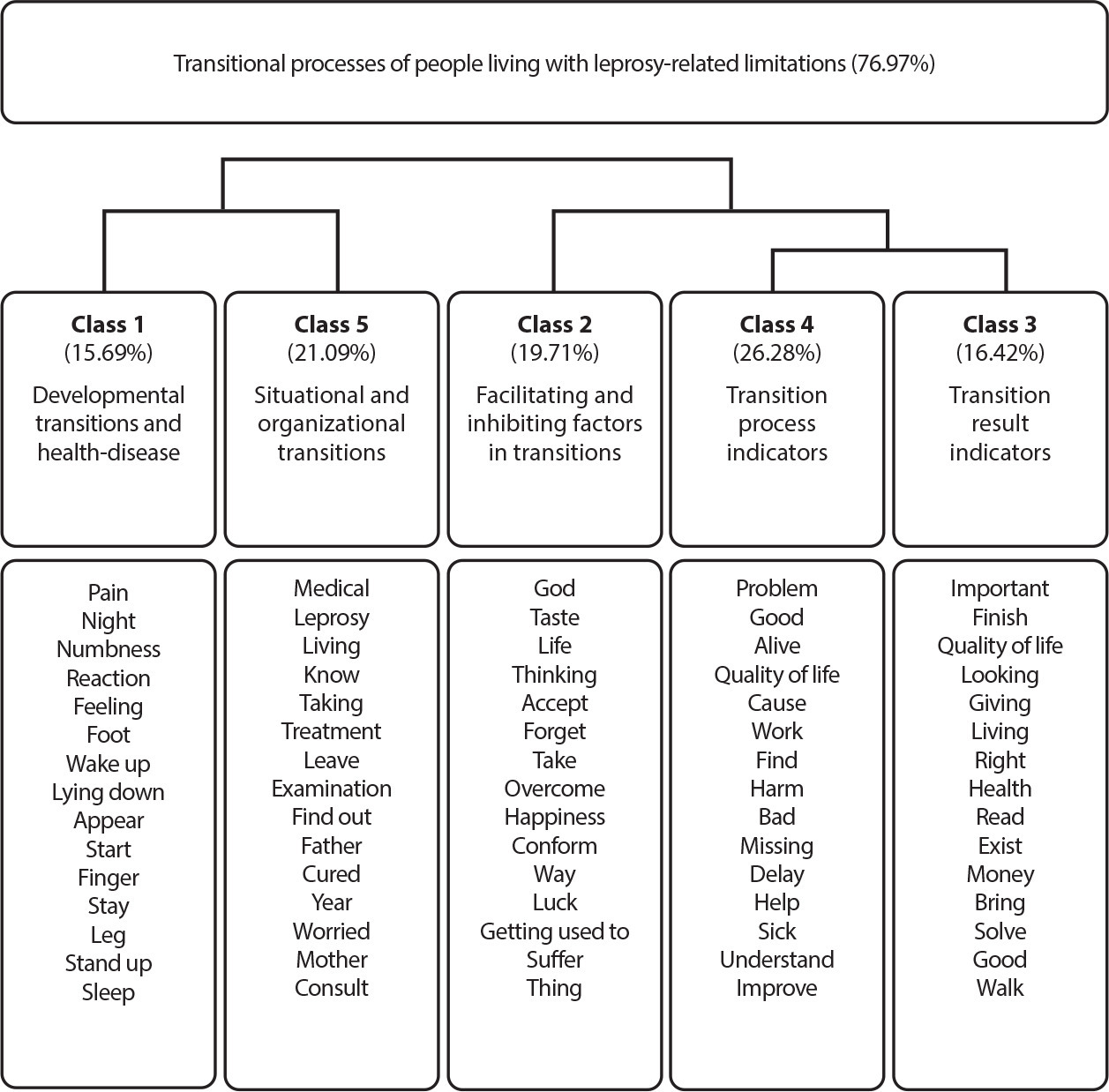
-
ORIGINAL ARTICLE10-25-2024
Analysis of the vaccination situation against Mpox in people living with HIV/AIDS: an ecological study
Revista Brasileira de Enfermagem. 2024;77(5):e20230234
Abstract
ORIGINAL ARTICLEAnalysis of the vaccination situation against Mpox in people living with HIV/AIDS: an ecological study
Revista Brasileira de Enfermagem. 2024;77(5):e20230234
DOI 10.1590/0034-7167-2023-0234
Views0See moreABSTRACT
Objectives:
to analyze the vaccination situation against Mpox in people living with HIV/AIDS in Brazil.
Methods:
an ecological study on the vaccination status against Mpox in people living with HIV/AIDS (PLWHA) in Brazil. The data were collected in April 2023 through information from the Ministry of Health, using the “Microsoft app Power BI,” which is publicly accessible.
Results:
the data analysis revealed that in Brazil, 2,978 doses of the MVA-BN Jynneos Mpox vaccine were administered in PLWHA, resulting in a vaccination coverage of 18.3%, with the southern and southeastern regions showing the lowest and highest vaccination coverage, respectively. Gender-based evaluation showed a higher proportion of vaccinated males.
Conclusions:
we identified low vaccination coverage in all regions of Brazil, highlighting the need for intensified vaccination activities, especially for PLWHA.
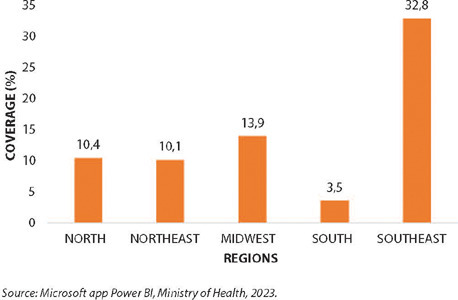
-
ORIGINAL ARTICLE12-13-2024
Adaptation and implementation of a Nursing care protocol for children in the Amazon Region
Revista Brasileira de Enfermagem. 2024;77(5):e20230245
Abstract
ORIGINAL ARTICLEAdaptation and implementation of a Nursing care protocol for children in the Amazon Region
Revista Brasileira de Enfermagem. 2024;77(5):e20230245
DOI 10.1590/0034-7167-2023-0245
Views0See moreABSTRACT
Objectives:
to describe the process of implementing an adapted protocol for pediatric nursing care in a health unit located in a municipality in the Amazon Region.
Methods:
methodological research conducted in a basic health unit with four family health teams in the state of Rondônia, involving seven nursing professionals. Data collection occurred between October 2020 and April 2022, following the research phases: situational diagnosis, exploratory phase, protocol definition, implementation, and evaluation.
Results:
the outcome was the adaptation and implementation of a nursing care protocol for children.
Final Considerations:
the adaptation and implementation process can be an effective approach to improving care, strengthening nursing as a profession with a solid foundation in scientific and clinical evidence. This facilitates early problem identification and appropriate guidance, leading to better health outcomes for children.
-
ORIGINAL ARTICLE11-22-2024
Knowledge sharing: nurse managers’ practices
Revista Brasileira de Enfermagem. 2024;77(5):e20230287
Abstract
ORIGINAL ARTICLEKnowledge sharing: nurse managers’ practices
Revista Brasileira de Enfermagem. 2024;77(5):e20230287
DOI 10.1590/0034-7167-2023-0287
Views0See moreABSTRACT
Objective:
To analyze how management practices for sharing knowledge are developed in public hospitals in the context of nursing.
Methods:
Qualitative research, carried out with 15 nurse managers from six public hospitals, from July to September 2022. Data were collected through semi-structured interviews and analyzed according to content analysis and in a model for sharing knowledge at work.
Results:
Knowledge sharing in nursing occurs through intraand extra-organizational training (training, courses and events), use of digital communication tools (media and social networks) and individual and collective contact between professionals during the service (experiences, exchange of experiences and assessment feedback).
Final considerations:
Sharing knowledge is relevant to nursing work. To improve it, it must be understood that effective sharing occurs from person to person, in their daily practices, and must be conducted as a strategically planned process by nurse managers.
-
REVIEW06-17-2020
The role of the nurse in caring for the critical patient with sepsis
Revista Brasileira de Enfermagem. 2020;73(4):e20190031
Abstract
REVIEWThe role of the nurse in caring for the critical patient with sepsis
Revista Brasileira de Enfermagem. 2020;73(4):e20190031
DOI 10.1590/0034-7167-2019-0031
Views0See moreABSTRACT
Objectives:
to know the nursing interventions in the identification, prevention and control of sepsis in critical patients.
Methods:
integrative review of the literature, with two parallel researches using different MesH terms, using the EBSCO database and Google Scholar. Nine studies were included in the sample.
Results:
nursing interventions are centered on the creation/implementation of protocols for the early recognition of sepsis, the training of teams to ensure a safe and effective approach and the adoption of measures for infection prevention and control as a way to prevent sepsis.
Final Considerations:
the evidence shows that nurses are fundamental in the early identification, control and prevention of sepsis, preventing disease progression and contributing to decreased morbidity and mortality.
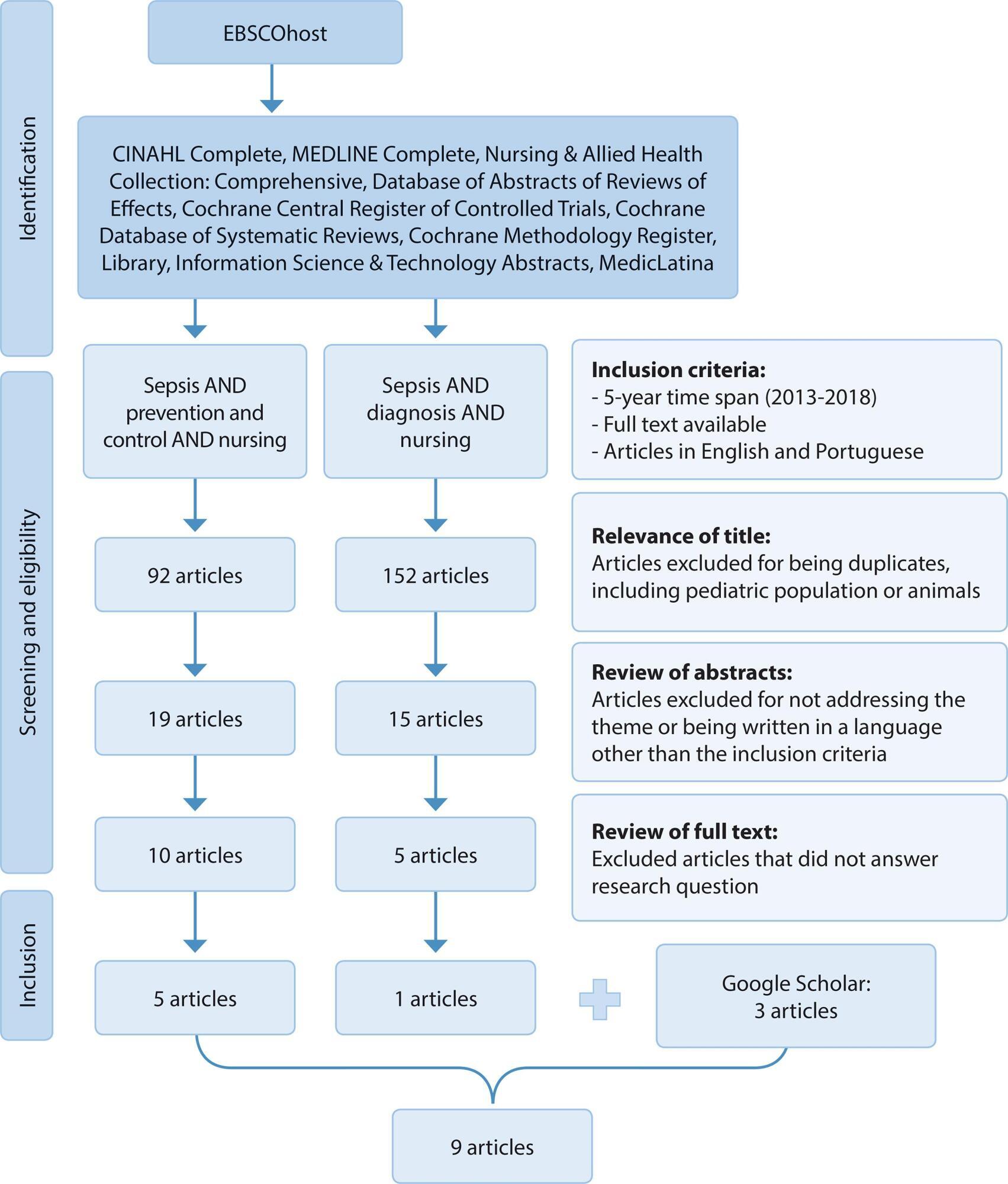
-
ORIGINAL ARTICLE02-10-2020
Common Mental Disorders and Contemporary Factors: 1982 Birth Cohort
Revista Brasileira de Enfermagem. 2020;73(1):e20180162
Abstract
ORIGINAL ARTICLECommon Mental Disorders and Contemporary Factors: 1982 Birth Cohort
Revista Brasileira de Enfermagem. 2020;73(1):e20180162
DOI 10.1590/0034-7167-2018-0162
Views0See moreABSTRACT
Objective:
To describe the association between common mental disorders and socio-demographic variables, smoking habits and stressful events among the 30-year-old members of a 1982 cohort.
Method:
Mental disorder was analyzed by the Self-Reporting Questionnaire (SRQ-20). Poisson regression was used to analyze the unadjusted and adjusted associations.
Results:
Low level of education and stressful events increased the prevalence of mental disorders for both genders. Lower income for women and unemployment for men also remained associated with CMD.
Conclusion:
It was possible to describe the association between contemporary factors and mental disorders in a young population, to which prevention and control measures, through public policies proposed to the areas of Primary Care, Mental Health and Education, can represent a better quality of life and health.
-
ORIGINAL ARTICLE09-21-2020
Prevalence of xerostomia in women during breast cancer chemotherapy
Revista Brasileira de Enfermagem. 2020;73:e20190785
Abstract
ORIGINAL ARTICLEPrevalence of xerostomia in women during breast cancer chemotherapy
Revista Brasileira de Enfermagem. 2020;73:e20190785
DOI 10.1590/0034-7167-2019-0785
Views0See moreABSTRACT
Objective:
To identify the prevalence of xerostomia in women undergoing chemotherapy for breast cancer.
Method:
Prospective cohort with 27 women who underwent up to 16 sessions of intravenous chemotherapy. Data collection was performed at the outpatient clinic of a university hospital in the city of São Paulo, where two forms were applied before the start of treatment and the Xerostomia Inventory before and after each chemotherapy session.
Results:
Complaints of dry mouth were present in 48.1% of women before chemotherapy, and they were approximately 28 times more likely to develop dry mouth during treatment. It was observed that the use of antiemetics contributed to the occurrence of xerostomia, and the anti-ulcerous were presented as a protective factor.
Conclusion:
The study identified both a high prevalence of xerostomia regardless of the chemotherapy used and the need to create protocols to improve the quality of life of these patients.
-
ORIGINAL ARTICLE12-13-2019
Hammock and nesting in preterm infants: randomized controlled trial
Revista Brasileira de Enfermagem. 2019;72:96-102
Abstract
ORIGINAL ARTICLEHammock and nesting in preterm infants: randomized controlled trial
Revista Brasileira de Enfermagem. 2019;72:96-102
DOI 10.1590/0034-7167-2018-0099
Views0See moreABSTRACT
Objective:
To compare the physiological variables and the sleep-wake pattern presented by preterm in nesting and hammock positions after diaper change.
Method:
This is a crossover randomized controlled trial. It was conducted with 20 preterm infants who, after diaper change, were placed in nests or hammocks. These preterm infants were evaluated for physiological variables (heart rate and oxygen saturation) and behavioral variables (sleep and wakefulness).
Results:
There was no statistically significant difference in the studied variables between nesting and hammock positions. However, regarding the categorical variable sleep, the comparison between the research phases for the hammock position showed differences between the baseline phase and the immediate recovery (p=0.00), baseline and late recovery (p=0.00), response and immediate recovery (p=0.00), response and late recovery (p=0.00).
Conclusion:
No differences were identified between the nest and the hammock; however, the use of the hammock favored the sleep of preterm infants compared to its non-use.
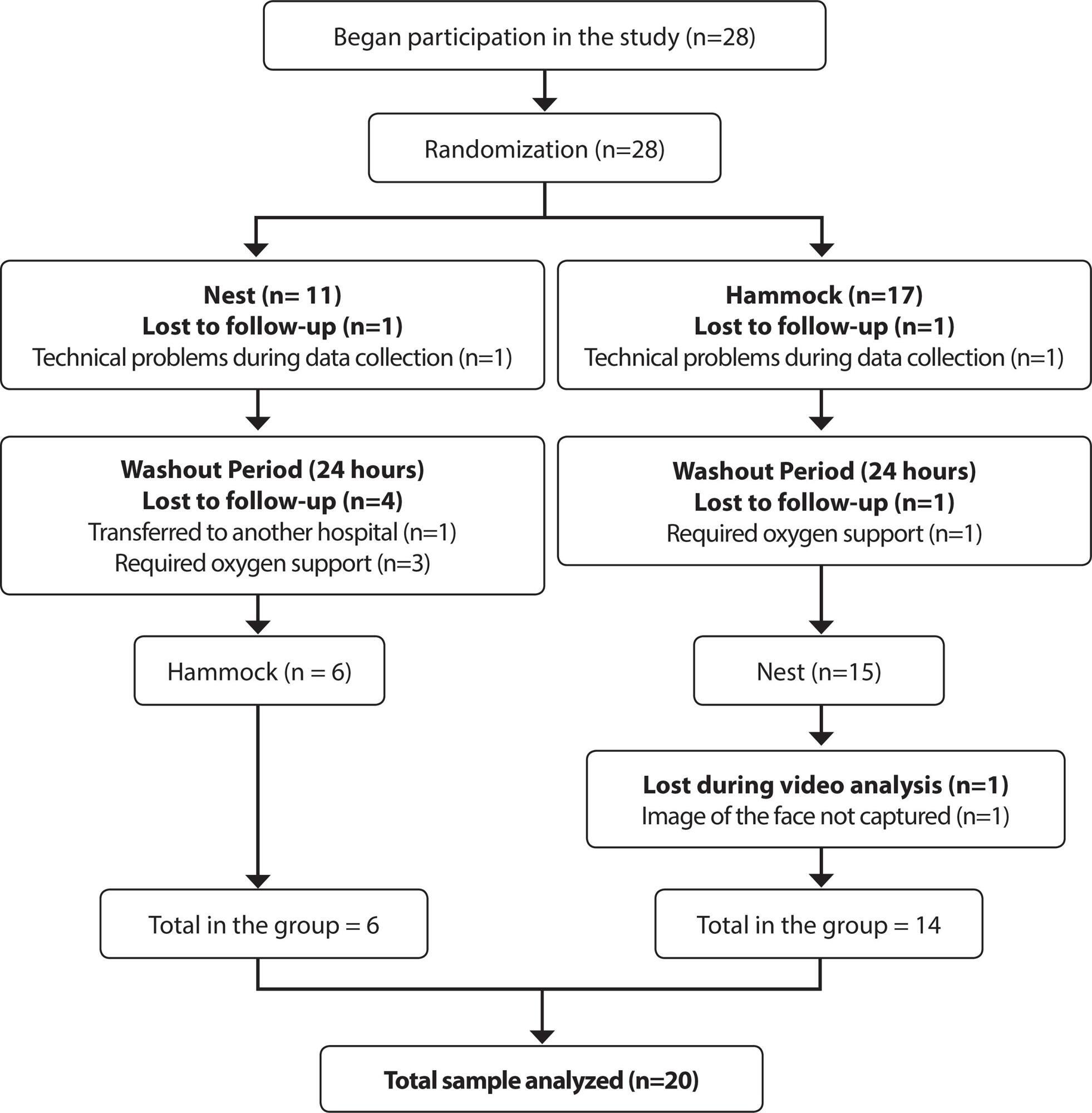
-
ORIGINAL ARTICLE05-15-2020
Configuration of power relations in physicians and nurses’ professional practices
Revista Brasileira de Enfermagem. 2020;73:e20180629
Abstract
ORIGINAL ARTICLEConfiguration of power relations in physicians and nurses’ professional practices
Revista Brasileira de Enfermagem. 2020;73:e20180629
DOI 10.1590/0034-7167-2018-0629
Views0See moreABSTRACT
Objective:
to analyze the configuration of power relations constituted in and by the knowledge and daily practices of physicians and nurses in an Intensive Care Unit (ICU).
Method:
qualitative study in which data were collected through interviews with physicians and nurses from an ICU of a hospital in Belo Horizonte, Minas Gerais. A semi-structured script was used. Data were analyzed through discourse analysis in a Foucaultian perspective.
Results:
three categories were developed – Professional Identity: self-recognition in the profession; Discipline: individualizing attitudes or collective need?; and Circularity of knowledge and power in the constitution of daily practices.
Final considerations:
the identity, discipline and circulation of power are connected in a continuous movement of subjectivation of the subject, which, in turn, uses discourse as a persuasion strategy to modify the position taken over in different situations thereby causing the circulation of power.
-
REVIEW03-30-2020
Internet influence on the biopsychosocial health of adolescents: an integratitive review
Revista Brasileira de Enfermagem. 2020;73(2):e20180766
Abstract
REVIEWInternet influence on the biopsychosocial health of adolescents: an integratitive review
Revista Brasileira de Enfermagem. 2020;73(2):e20180766
DOI 10.1590/0034-7167-2018-0766
Views0See moreABSTRACT
Objectives:
To identify scientific evidence on the influence of internet use on adolescents’ biopsychosocial health.
Methods:
Integrative review, with database search, using the descriptors “internet”, “adolescent health” and “adolescent behavior”. After applying the inclusion and exclusion criteria, 16 articles were selected.
Results:
Knowledge convergence produced for three main themes was demonstrated: “Internet exposure time and possible damages to adolescent health”; “Internet, adolescent and cyberbullying”; and “Internet as a source of information for adolescent health”.
Final considerations:
The network involves an intricate network of interactions, providing varied behaviors and attitudes that reflect on adolescent health. Therefore, it is important to articulate nursing actions with the school community and the family, in order to carry out health education.
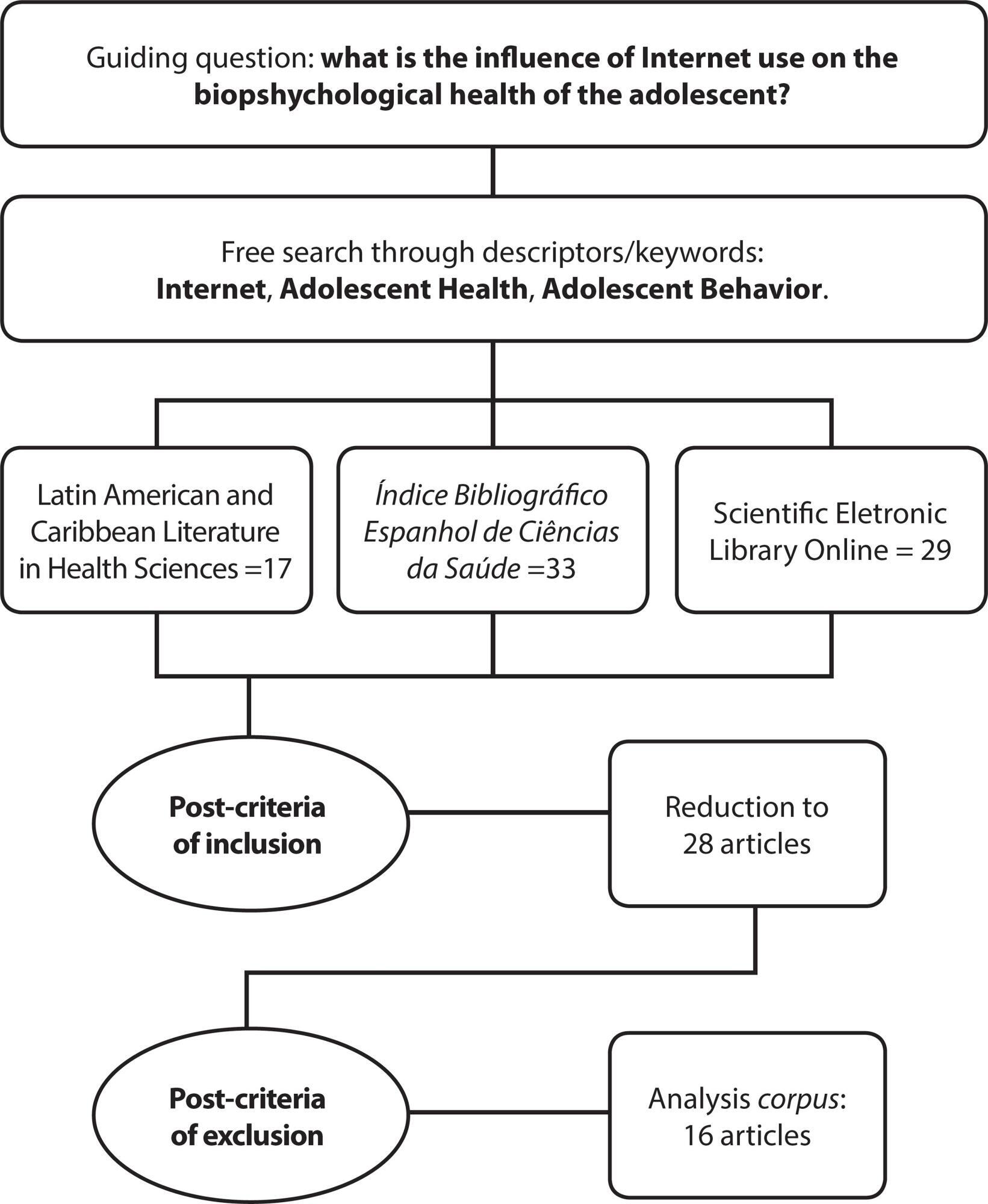
-
ORIGINAL ARTICLE02-17-2020
Analysis of records by nursing technicians and nurses in medical records
Revista Brasileira de Enfermagem. 2020;73(2):e20180542
Abstract
ORIGINAL ARTICLEAnalysis of records by nursing technicians and nurses in medical records
Revista Brasileira de Enfermagem. 2020;73(2):e20180542
DOI 10.1590/0034-7167-2018-0542
Views0See moreABSTRACT
Objectives:
to analyze the main non-conformities of the nursing records of a public hospital in Natal, Brazil.
Methods:
this is a descriptive, cross-sectional study, with a quantitative approach. This study was conducted in nursing departments of medical and surgical wards. The sample was composed of 120 medical records of inpatients between October and December 2016. The obtained data were tabulated and analyzed by simple statistics in absolute and relative frequency using the 2013 Microsoft Excel software. The Pareto Diagram was used to evaluate the non-conformities of the records.
Results:
the main problems in the nursing records were the absence of the professional category and the nursing council number, responsible for 41.8% of the non-conformities in the records of nursing technicians; for nurses’ records, the main non-conformities were the absence of time and the illegible handwriting, with 61.2%.
Conclusions:
the study showed that nursing professionals perform their records incompletely and often do not document the care provided.
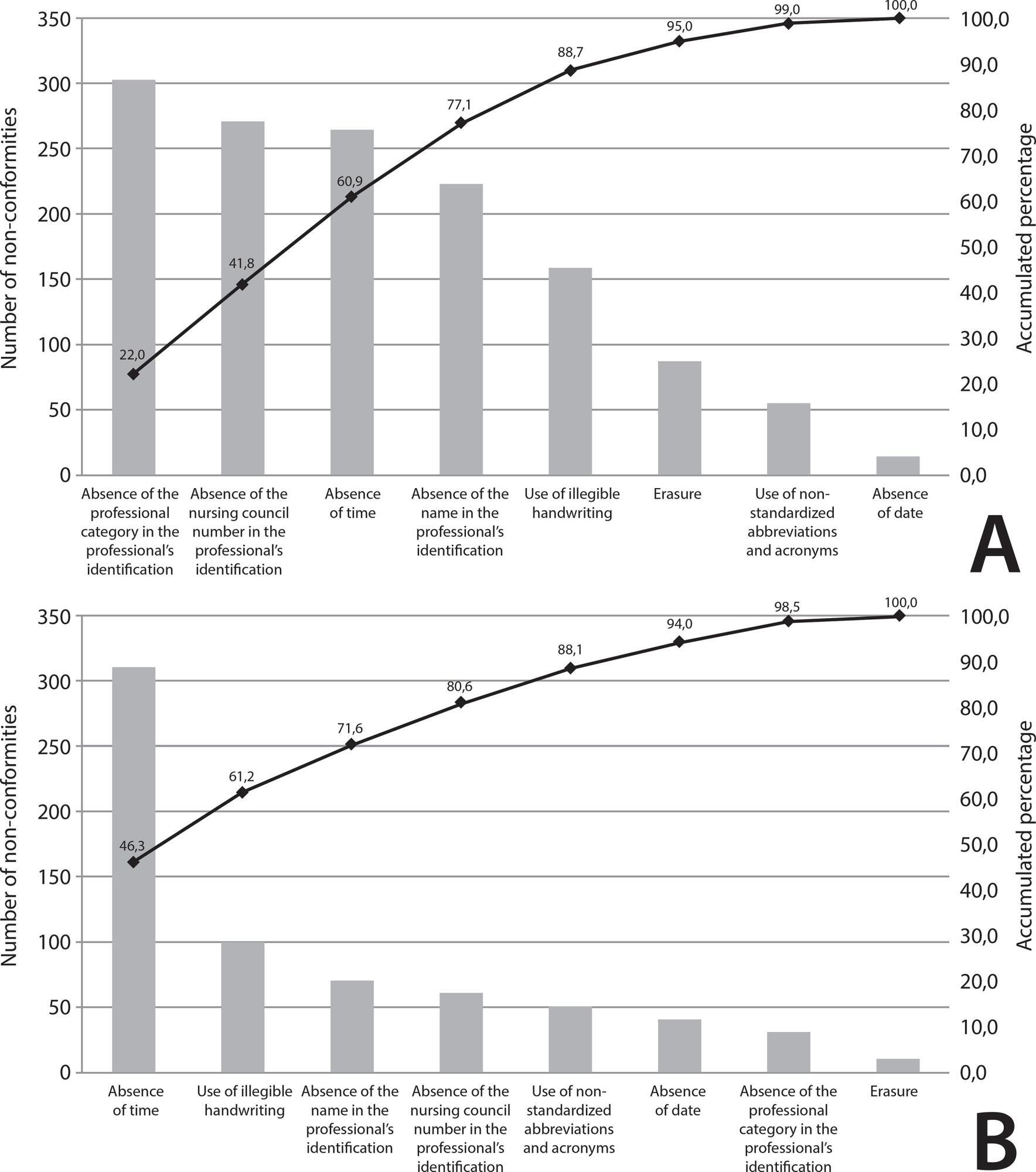
-
12-05-2019
Hospital care and urinary incontinence in the elderly
Revista Brasileira de Enfermagem. 2019;72:284-293
Abstract
Hospital care and urinary incontinence in the elderly
Revista Brasileira de Enfermagem. 2019;72:284-293
DOI 10.1590/0034-7167-2018-0273
Views0See moreABSTRACT
Objective:
to identify factors inherent in hospital care that favor urinary incontinence in the elderly.
Method:
an integrative review with Scopus, CINAHL and Pubmed searches. Includes original articles, no language restriction, published between 2008 and 2018. Rated level of recommendation and level of evidence were assessed using the Oxford Center for Evidence-Based Medicine classification. Exploited content through thematic analysis in light of the Donabedian model.
Results:
13 articles constituted the sample. There were factors such as the unjustified and indiscriminate use of devices such as the geriatric diaper; hospital structure adversely affecting the needs of the elderly; and deficit in screening, risk identification and underreporting of the problem favor urinary incontinence in the hospitalized elderly.
Conclusion:
modifiable factors related to hospital structures and care processes favor both the onset and worsening of urinary incontinence in the elderly.
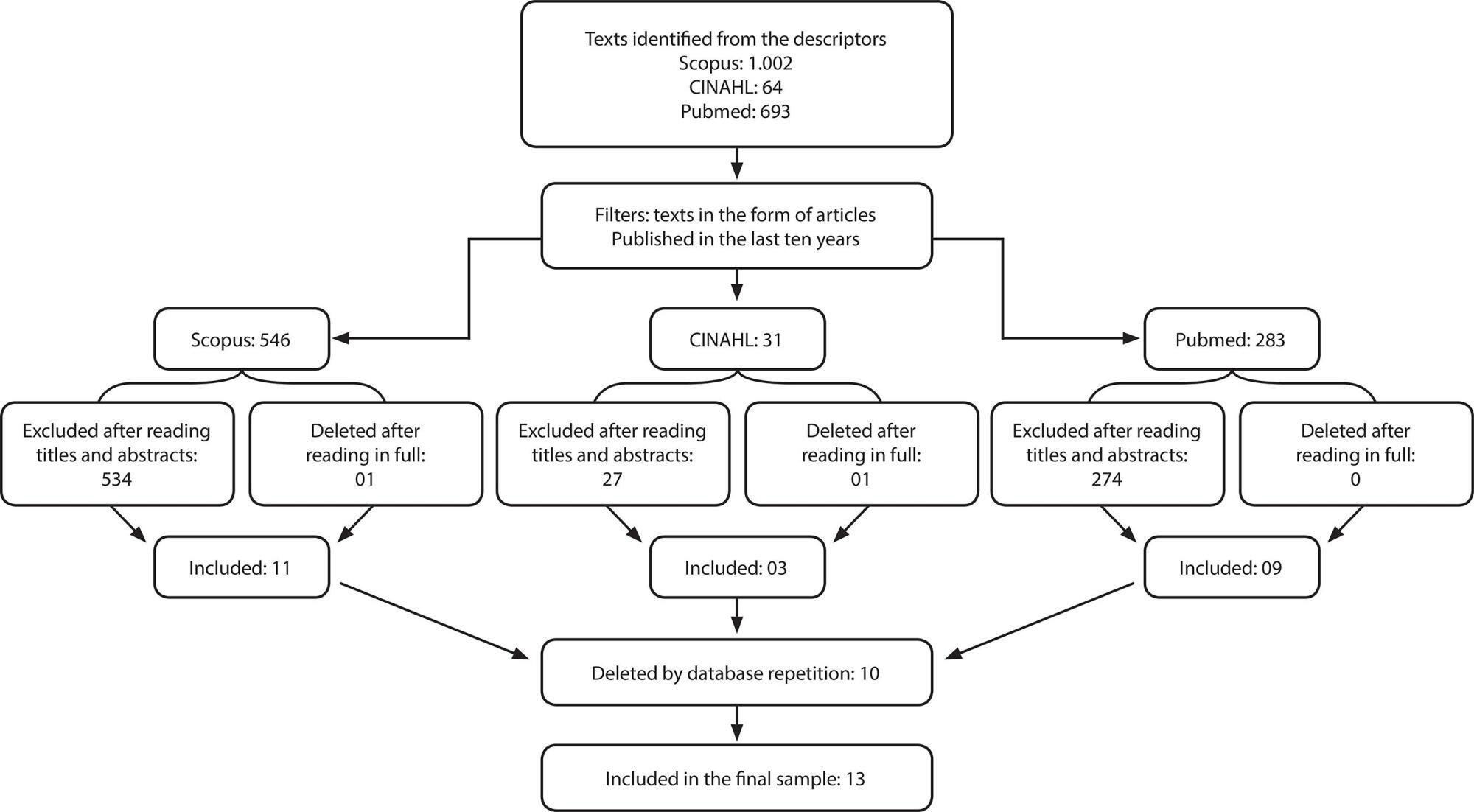
Search
Search in:
Nuvem de Tags
Adolescente (85) Atenção Primária à Saúde (239) COVID-19 (91) Criança (91) Cuidados de Enfermagem (269) Educação em Enfermagem (151) Educação em Saúde (139) Enfermagem (930) Enfermagem Pediátrica (86) Estudantes de Enfermagem (77) Estudos de Validação (131) Família (87) Idoso (208) Promoção da Saúde (99) Qualidade de Vida (104) Saúde do Trabalhador (86) Saúde Mental (145) Saúde Pública (82) Segurança do Paciente (150) Tecnologia Educacional (100)



